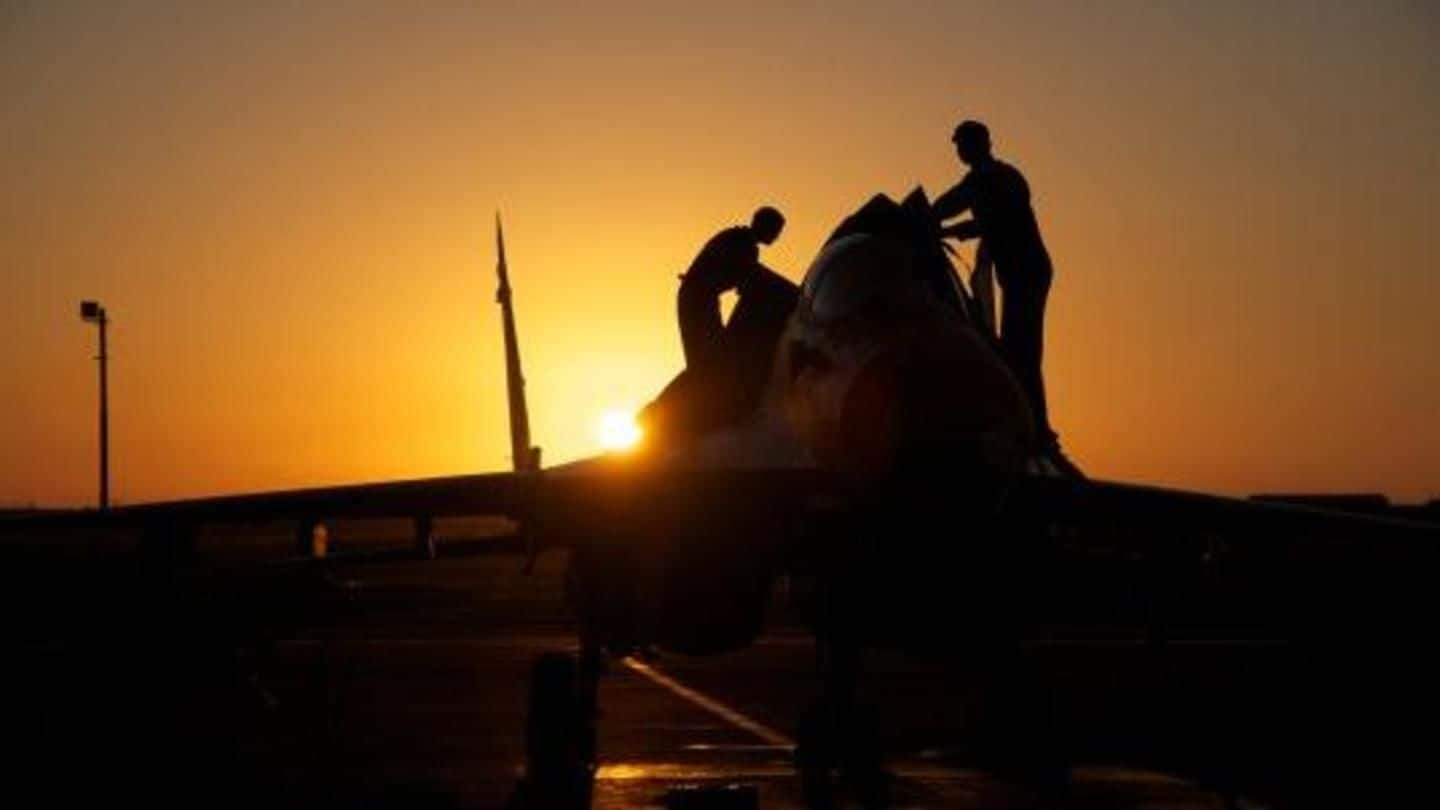
GaganShakti-2018: 13-day mega exercise sees 14,000 men, 11,000 sorties
What's the story
The Indian Air Force (IAF) flew as many as 11,000 sorties in its mega 13-day GaganShakti exercise, which came to an end April 22. IAF's aim was to test its preparedness on land, air and water for a two-front war with China and Pakistan. It tested its capabilities in different aspects like aerial combat, air-to-surface combat, long-distance operations, paratrooper assault and mass evacuation.
Sorties
Sukhoi-30MKIs, Jaguars, Mirage-2000s, MiGs were deployed, Tejas also made debut
GaganShakti saw the deployment of fighters like Sukhoi-30MKIs, Jaguars, Mirage-2000s, MiG-21s and MiG-27s. The indigenous Tejas also debuted, and performed well despite snags. The exercise saw the forces shifting air combat operations from the western to northern borders within 48 hours. Civil airfields were also activated. "Overall, we ensured 80% serviceability of different aircraft, with 97% for radars and missile systems," an officer said.
Twitter Post
Glimpses from GaganShakti 2018
#GaganShakti2018 enabled #IAF to validate Ops efficacy of new platforms refine existing SOP's. Joint Operations with #Army #Navy during the exercise, would help in achieving better Ops synergy between the three services, in application of combat power.
— Indian Air Force (@IAF_MCC) April 24, 2018
Full video YouTube fb pic.twitter.com/vJW3xKfJe3
Exercises
Evacuation drills, paradropping soldiers, mid-air refuelling and more
These days have witnessed spectacular shows, an IAF statement said. One exercise involving the Parachute Brigade "included paradrop of 560 paratroopers, combat vehicles and GPS-guided cargo platforms." In evacuation drills, 88 "casualties" were airlifted from Leh to Chandigarh via a modified C-17 Globemaster aircraft. In maritime air operations, Su-30s "engaged multiple targets...and (ended up) covering 4,000km in one mission." The IL-78 aircraft refueled them mid-air.
Success
14,000 men participated in exercise that "fully achieved" objectives
The IAF also tested its capacity to resist a chemical, biological, radiological and nuclear (CBRN) attack. Though it didn't offer many details, the force said they are satisfied with their capability to deal with such situations. 1,400 officers and 14,000 men participated in the 13-day exercise. "The overall objective of Gagan Shakti was fully achieved," said Air Chief Marshal BS Dhanoa.
Twitter Post
'Clandestine insertion of paratroopers into the enemy territory'
#GaganShakti2018-Combat Free Fall (CFF)Special Airborne Ops- Conducted from altitudes of 12,000-30,000ft. Aim is clandestine insertion of paratroopers into the Enemy territory. Troops jump at a distance far away from target covertly glide to the objective by Day or Night. pic.twitter.com/uK21jpprLf
— Indian Air Force (@IAF_MCC) April 18, 2018
Do you know?
Last similar exercise was Operation Brass Tacks in 1987
"India has not witnessed anything at this scale since Operation Brass Tacks in 1987," Dhanoa said. Operation Brass Tacks was till then India's largest peacetime military exercise, and had sent shockwaves through Pakistan.
Problems
GaganShakti also exposed shortages in the force
The exercise brought to the fore two causes for concern. It exposed the weakness of skewed squadron strength: IAF has a sanctioned strength of 42, but is operating with only 33, each with 18-20 fighters. With full strength, the north-to-west shifting can be done in hours instead of two days, officers said. Moreover, the production rate of Tejas is currently slower than desirable.
Do you know?
Massive drill came as China, Pakistan increase activity along borders
The combat drill came at a time when China is increasingly attempting to assert its dominance along its border with India. On the western front, ceasefire violations by Pakistan along the Line of Control have drastically increased too.